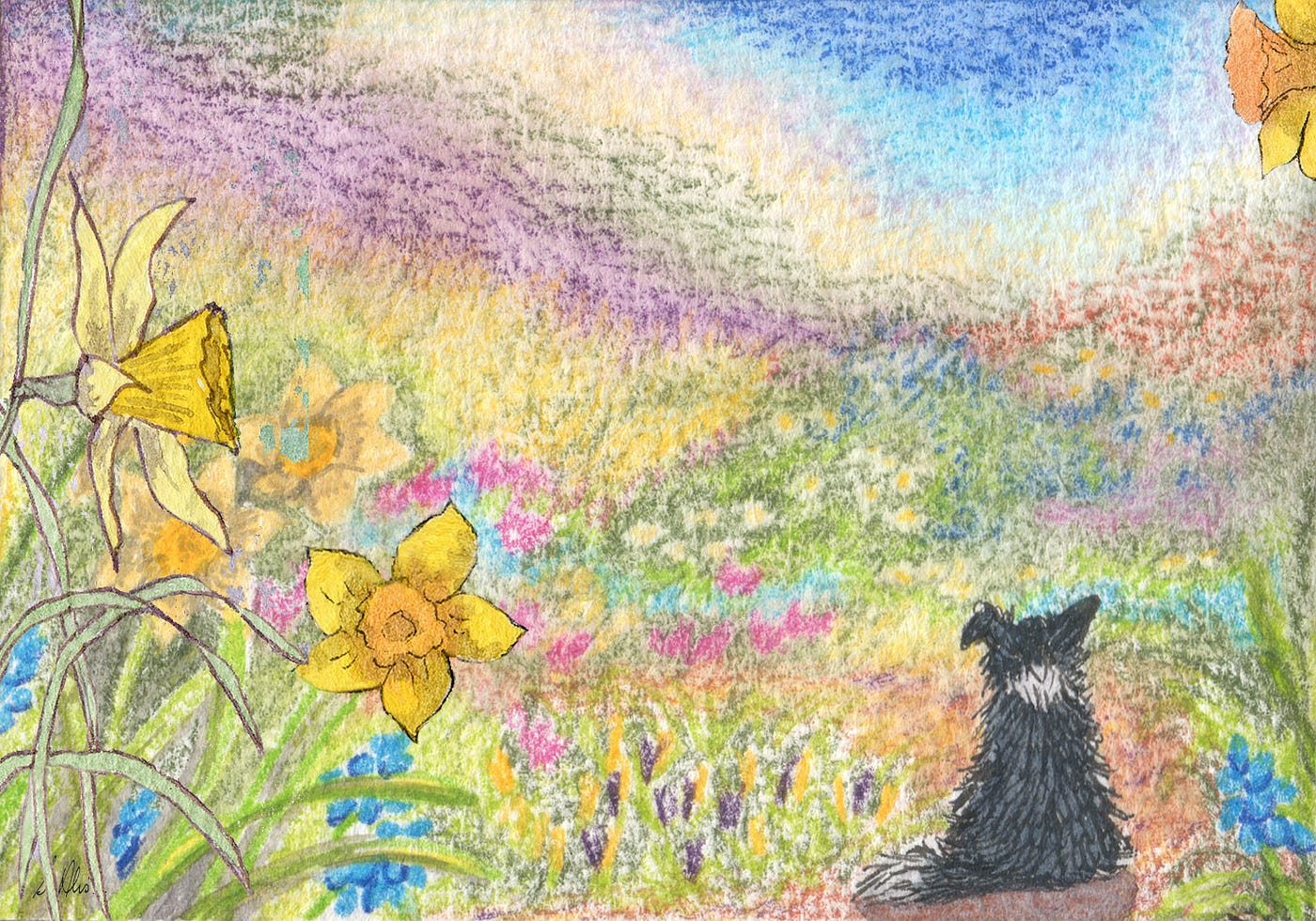Mason (2010) describes William Wordsworth as, above all, someone who listens and watched his world (p. ix). In 1804, fellow poet Samuel Taylor Coleridge (1895) wrote that Wordsworth was happy not because it was his natural disposition to be so, but because he
“knows the intrinsic value of the different objects of human pursuit. . .because he feels, and with a practical faith” (p. 450).
These two ideas of who Wordsworth was are most prominently displayed in his poem ‘I wander’d lonely as a cloud’.
Figurative Language
The poem is a lyric poem, a style of formal poetry that expresses personal feelings and emotions through first person (Clive, 2011). Wordsworth utilizes figurative language, a tool which helps authors create meaning from unrelated ideas and to heighten the effect of these complicated implications (Merriam-Webster, n.d.). Figurative language is the exploration of what is not literal—it is going beyond the literal to create new meanings through the use of figurative devices. This essay explores the themes of human and nature through the use of figurative language in ‘I wander’d lonely as a cloud’.
Similes and Emotional Connections
The use of the similes in the poem demonstrates the emotional connection humans make with nature. A simile is a figurative device that shows an explicit link between often unrelated objects or subjects through the use of the word ‘as’ or ‘like’ (Abrams & Harpham, 2013). The first, and most obvious, use of figurative language in the poem is both its first line and its title: “I wandered lonely as a cloud” (Poetry Foundation, n.d., para. 1). In this line, Wordsworth is comparing himself—and his loneliness—to that of a cloud. As part of nature, clouds have no definitive understanding of loneliness, but Wordsworth uses the word ‘as’ to show the connection between his human emotions and the emotions he perceives in nature.
Personification
Through the figurative device of personification, Wordsworth highlights the similarities between humans and nature and the human ability to project ourselves onto the nature around us.
Personification is when an abstract concept or inanimate object, such as something in nature, is attributed with human feelings or attributes (Abrams & Harpham, 2013). In the third line of ‘I wander’d lonely as a cloud’, Wordsworth writes
“When all at once I saw a crowd, / A host, of golden daffodils” (Poetry Foundation, n.d., para. 1).
Here, the daffodils have been personified as though they were humans forming a crowd. Additionally, in the second stanza, Wordsworth states that the daffodils were “Tossing their heads in sprightly dance” (Poetry Foundation, n.d., para. 2). Both of these lines show the narrator projecting their human characteristics—the daffodils are not just a group, but a crowd, all dancing together like humans would.
Metaphors
The last stanza of ‘I wander’d lonely as a cloud’ uses the figurative device of a metaphor to highlight the lasting impact nature has on humans. A metaphor is when an expression or word is literally represented as something else; unlike a simile, it does not use the words ‘like’ or ‘as’ (Abrams & Harpham, 2013).
The final stanza of ‘I wander’d lonely as a cloud’ states that when the narrator is laying around, on days when he is pensive, the daffodils “flash upon that inward eye” (Poetry Foundation, n.d., para. 4). Wordsworth has made a metaphor that explicitly references his memories as an eye—not like an eye, but that they are an eye. The daffodils aren’t simply in his memories, they are literally flashing into this ‘eye’ that is his memory.
Conclusion
In conclusion, Wordsworth’s poem ‘I wander’d lonely as a cloud’ uses different devices of figurative language to enhance the themes of human and nature. The poem uses similes, personification, and a metaphor to highlight the connections between humans and nature, specifically how humans project and perceive themselves in the nature around them.
WORK CITED
Abrams, M. H., & Harpham, G. (2013). A glossary of literary terms. Cengage Learning.
Coleridge, S. T. (1895). Letters of Samuel Taylor Coleridge, vol II. The Riverside Press. https://www.gutenberg.org/files/44554/44554-h/44554-h.htm#Page_447
Clive, S. (2011). Vers libre: The emergence of free verse in France, 1886-1914. Clarendon Press.
Mason, E. (2010). The Cambridge introduction to William Wordsworth. Cambridge University Press.
Merriam-Webster. (n.d.). Figure of speech. In Merriam-Webster.com Dictionary. Retrieved May 6, 2021. https://www.merriam-webster.com/dictionary/figure%20of%20speech
Poetry Foundation. (n.d.). I wandered lonely as a cloud. https://www.poetryfoundation.org/poems/45521/i-wandered-lonely-as-a-cloud
